Testing the Powerslide XC Skeletons
After the test of the XC Paths two seasons ago, we're presenting you a new Nordic / All-Terrain Skate test. Powerslide proposes the XC Skeleton, an adjustable model for which you can use your own shoes...
Par alfathor
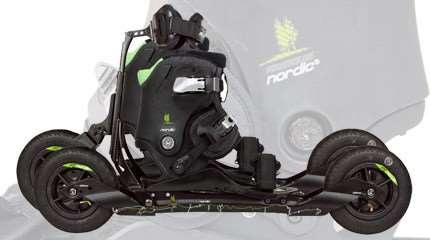
Test Bench
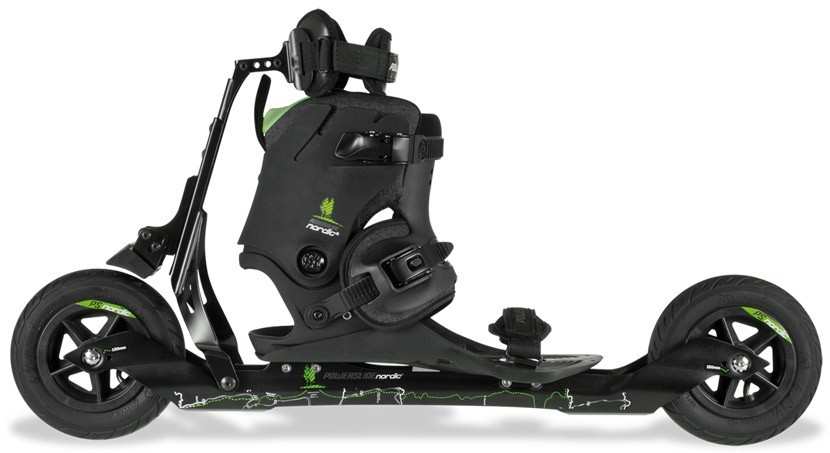
Design
The XC Skeletons are equipped with the same Xsjado shell that can be found on the aggressive models and on the Doop fitness range, distributed by the Conference. They enable to use your own shoes with the XC Skeletons. They are black and sober, which is just right for a use on various terrains. The aluminum frame is embossed and predominantly black, enhanced by a discreet pattern with touches of green and white, for quite a successful design combination.
The XC Skeleton is a model destined to Nordic Skating or Nordic Blading, a practice close to cross-country skiing, where skaters take dirt or stabilized paths instead of practicing in the snow. Nordic skaters usually kit themselves out with sticks in order to have an efficient propulsion, which is also a good upper body workout. All in all, it is a very complete activity!
Flexibility/Rigidity
The front-back flexion of the ankle is perfectly carried out by the hinge of the Doop/Xsjado shell cuff. It rotates around its axle without difficulty. You can make the flexion harder to do in tightening more the torx screw of the cuff.
Comfort
The tightening system is generously fitted with thick foam, offering a good overall comfort. On the other hand, we would strongly advise you to wear thick socks to reduce the friction. Ankle shoes such as trekking boots will provide you comfort and support.
Comfort is also linked to the precision of your size adjustment: You have the possibility of adjusting the skate to your shoe size, just like with a junior model, in sliding the front part of the shell. Make sure that you take a model that fits your size, because the upper goes quite high. If you are size 41 or 42, opt for the 36/42 model.
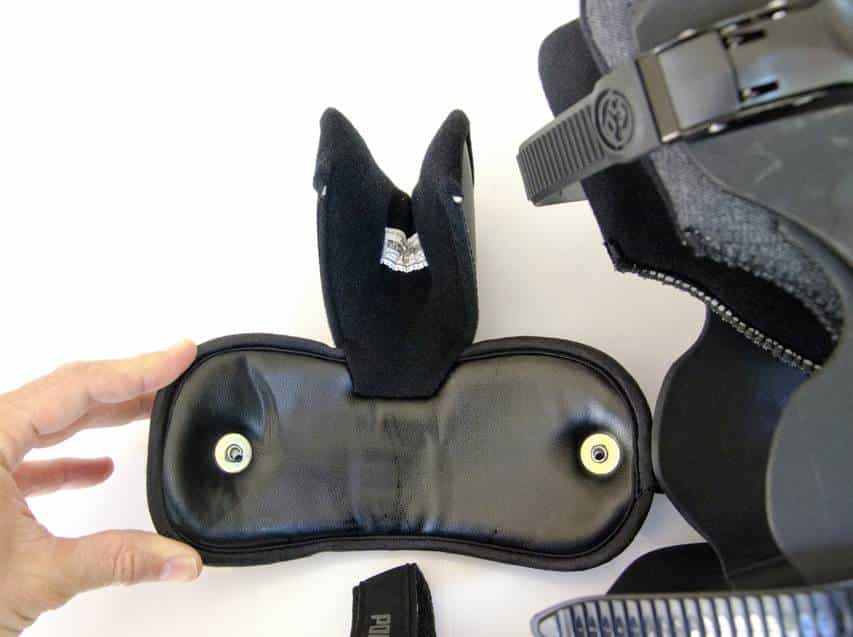
Tightening
Most of the tightening is provided by two micrometric buckles. They are completed by a strap at the front of the foot which finishes to wedge the shoe in the shell. The tightening proves to be efficient. To loosen the skates, press the unlock buttons situated on the buckles. Nothing specific to mention, the operation is executed quite naturally.
Support
The support on the sides of the shell is good, as the Doop/Xsjado boot holds the foot well. Here again, your choice of shoe makes the difference.
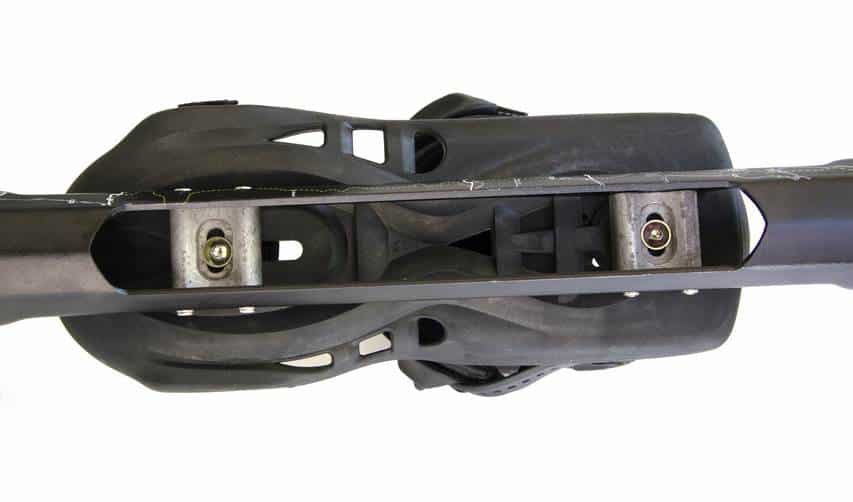
The Frame
Powerslide opted for an embossed aluminum frame (folded) of 57 cm. The structure, rounded on the sides, inspires sturdiness. The shell is fixed onto two big aluminum supports, each of them held by 4 Allen screws. It’s bulky, it’s a bit heavy, but it’s solid. The front part holding the wheel keeps a good flexibility however, making the whole device easier to handle. The rigidity is conveyed by the wheel and its axle.
Warning: the ground clearance is quite low, be careful with holes, bumps and branches. By the way, the lower part is quickly subject to friction.
Contrary to some other previous models, the XC Skeleton doesn’t need spacers between the frame and the wheels. They are already integrated into the frame, which makes their maintenance easier.
Bearings
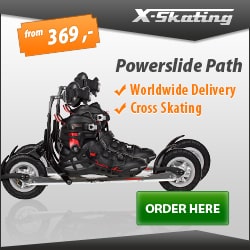 Powerslide chose to equip the XC Skeletons with the Rustproof bearing model. No degradation of the rolling to be mentioned during the tests. Just like their predecessors, they have a good lifespan due to their elastomer shield and a generous layer of lubricant inside.
Powerslide chose to equip the XC Skeletons with the Rustproof bearing model. No degradation of the rolling to be mentioned during the tests. Just like their predecessors, they have a good lifespan due to their elastomer shield and a generous layer of lubricant inside.
Wheels
The two 15.9 cm Innova Star tires can be inflated up to 6.3 bars according to the manufacturer. We went up to 8 bars to improve the rolling on hard surfaces. They are 3 cm wide, which proves to be a bit just for some rich soil portions. Stay on firm grounds, but limit asphalt parts as they abrade the wheels faster.
Screws and bolts
The 8 mm double axles are very sturdy. The screws are completed with toothed washers which prevent from any inopportune unscrewing. The fixing screws of the shell to the frame are also thick. You’ll have to wake up pretty early if you intend to break them!
When you go on an outing, make sure you have a set of tools with you: the XC Skeleton has cross-head screws, Allen screws, and Torx screws. Powerslide made the choice of outsizing all the screws in order to reduce deficiencies to the minimum.
The braking system
The frame holds a calf brake. It is an ergonomic brake rubber hugging the shape of the wheel. It is activated by a mechanical arm that is fixed on your calf with a strap. In order to use it, you just have to straighten up and shift the foot equipped with the system forwards. The rubber goes down on the wheel. You can regulate the pressure quite easily. If you press firmly, the braking is really powerful. Here again, Powerslide didn’t skimp on the material, the structure of the brake is generous. You can even adjust the height of the rubber if needed.
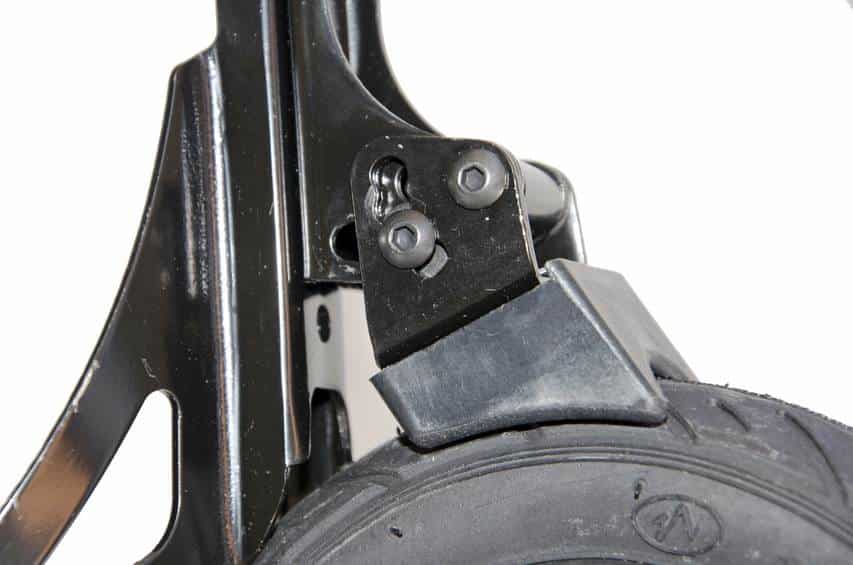
Finishing
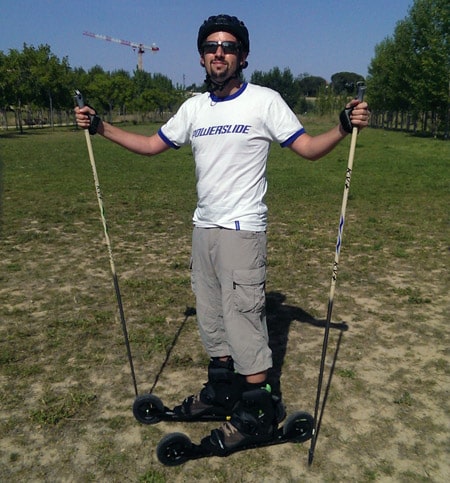 Powerslide delivers a massive but very solid product, which inspires confidence. The general finishing of the skate is very satisfying, despite a few material residues. The manufacturing process is well carried out in the factories of the German brand.
Powerslide delivers a massive but very solid product, which inspires confidence. The general finishing of the skate is very satisfying, despite a few material residues. The manufacturing process is well carried out in the factories of the German brand.
With use
We have tested the XC Skeletons on different types of surfaces. That Nordic skate fully expresses itself on stabilized grounds (tow paths). The rolling is excellent, the planting of the sticks is easy and you can keep a good pace without bothering about obstacles on the ground. On dirt grounds, choose preferably hard grounds, and as smooth as you can find. As mentioned above, the ground clearance is low. The advantage is that you gain in stability, but it also means that the surface should be regular enough to avoid banging into an obstacle. As well, avoid loose and muddy grounds where you will find yourself literally planted in the ground.
On cycle lanes, you can take a good speed but you damage your wheels faster. Moreover, vibrations going up the sticks are not really pleasant. When you are used to the practice of skating, the XC Skeletons seem pretty heavy and bulky at first. You need a few kilometers before getting the full hang of it. Using the brake is easy, you feel safe right away, even downhill.
We would strongly recommend you the use of sticks, which prove to be essential for propulsion. If you are not used to it, wear knee and elbow pads as complements to your helmet. You cannot protect your wrists when you use cross-country ski sticks, but you can opt for fingerless gloves.
Using your own pair of shoes is really handy. You can take your skates off if needed during difficult parts.
Conclusion
If you are a cross-country skier and you want to complete your training with summer outings, the XC Skeleton is an interesting alternative! For skaters, it is an opportunity to go and skate in the woods or on tow paths. It makes your arms work, which is not such a frequent opportunity in skating. If you’re feeling reckless, you can also use the XC Skeletons for traction skating, once you have got rid of the brake.
Strong points and points to be improved
 |
+ Support + Efficient tightening + Braking system |
 |
– Weight |
Technical facts
Brand: Powerslide
Model: XC Skeleton
Year: 2013-2014
Shell: composite semi-rigid shell reinforced with 15% of glassfiber / adjustable size / to be used with sports shoes
Heat moldable: No
Liner: 3D foam pre-molded to hold a shoe.
Tightening: Micrometric buckles and velcro straps – Powerstrap
Sizes: 36-42 EU or 42-47 EU / 4-9 US or 9-13 US
Frame: 6061 aircraft aluminum frame / 3D stamped / Magnesium mounting blocks
Wheels: Innova 159 mm 78A (Shores) air tires (6.3 bars, 90 psi)
Bearings: Powerslide Rustproof 7
Spacers: Metal
Brake: Calf brake system with mechanical arm fixed to the calf and applying pressure on the wheel
Public price: 319€
Photo gallery
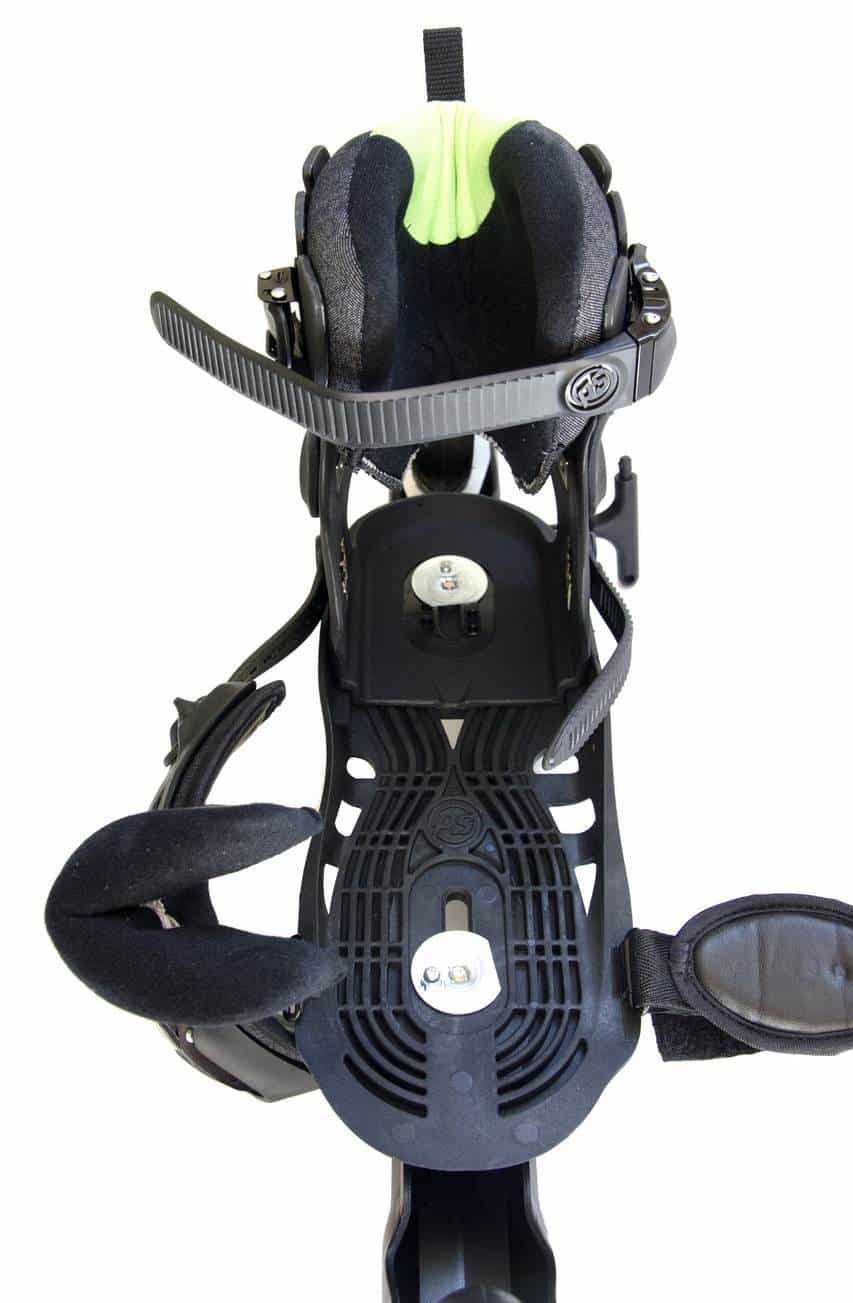 |
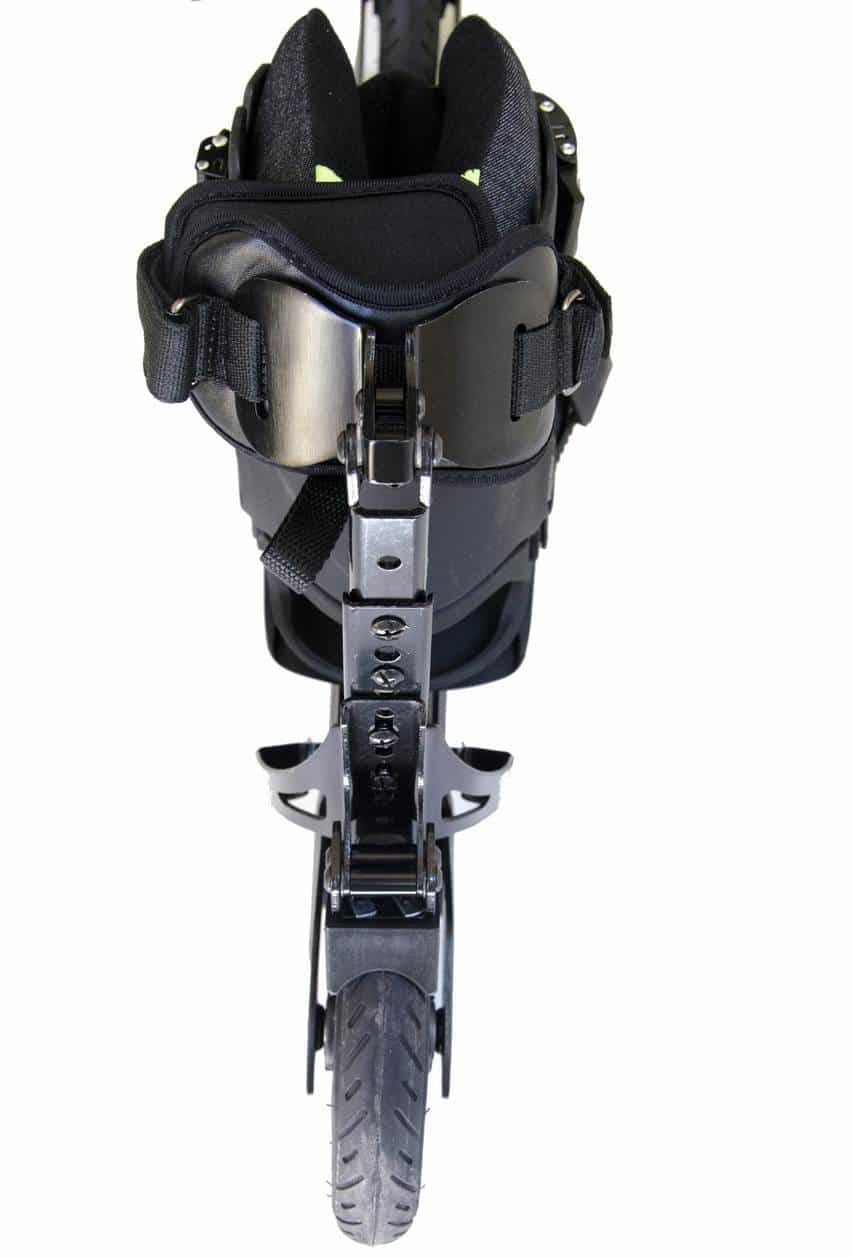 |
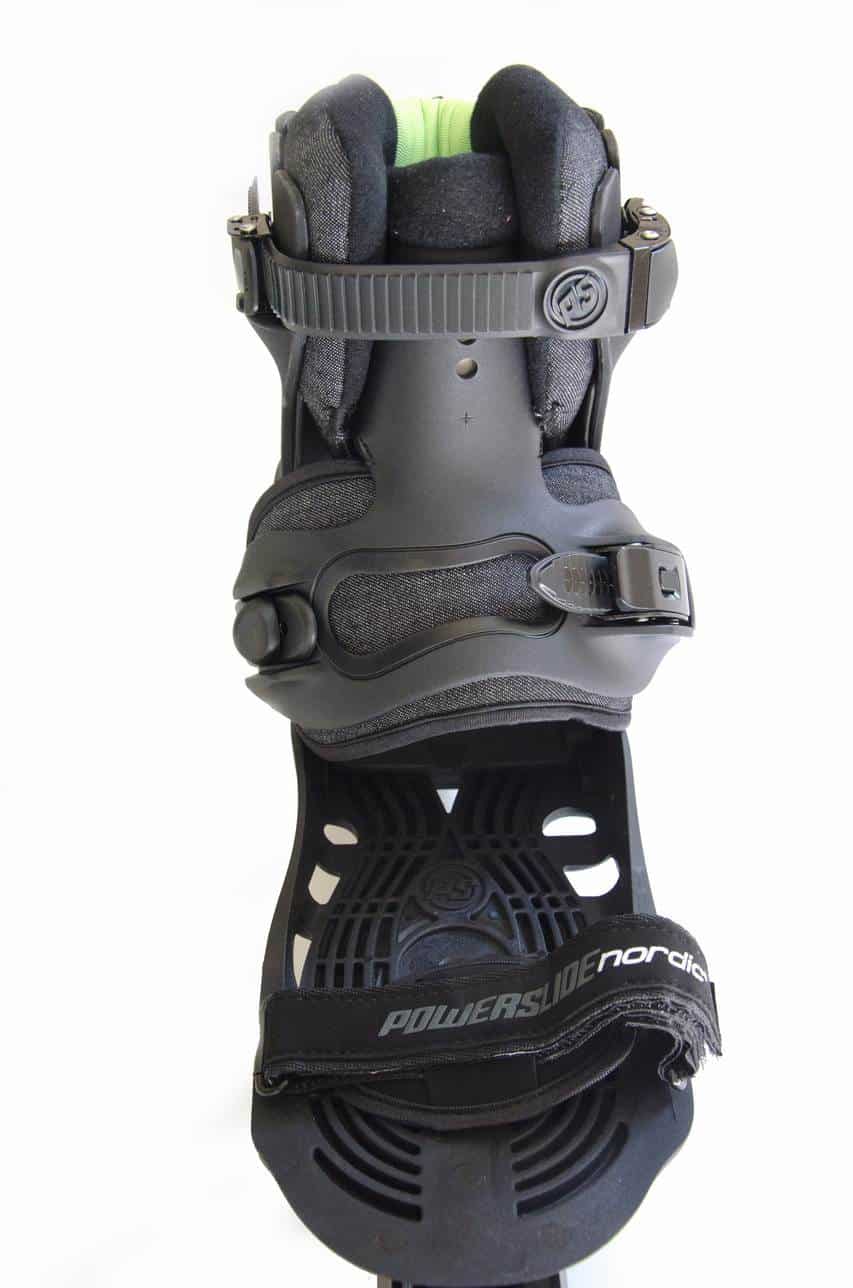 |
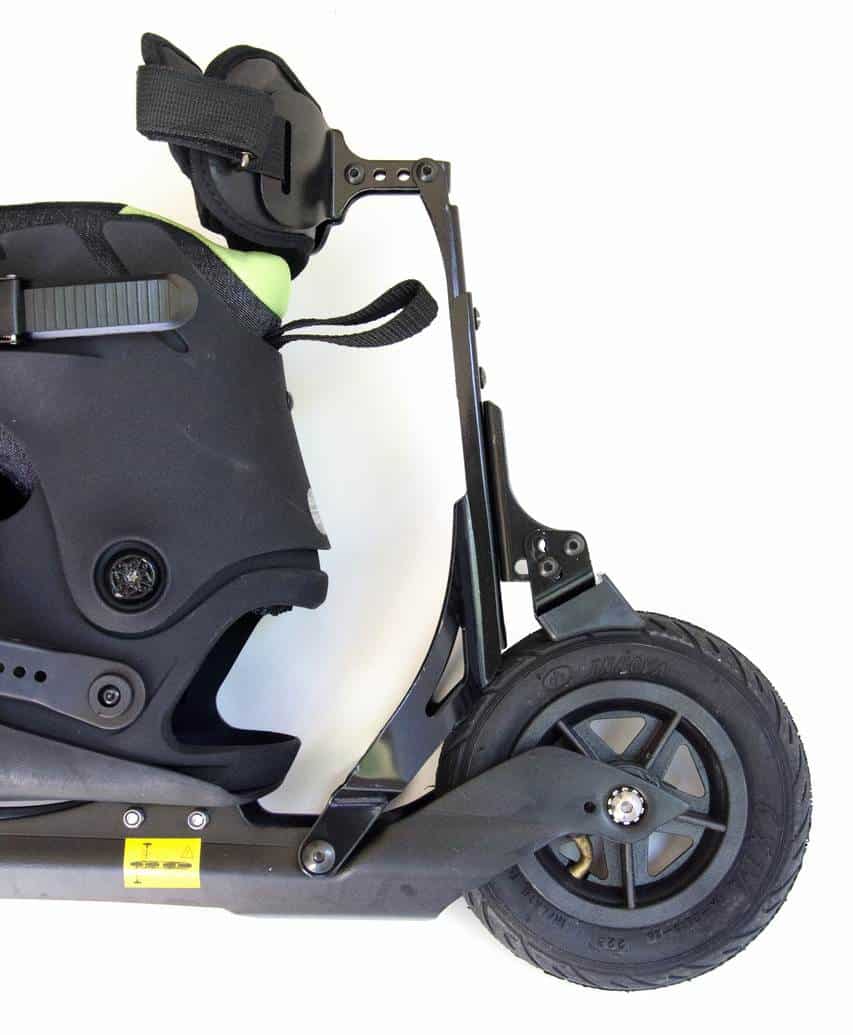 |
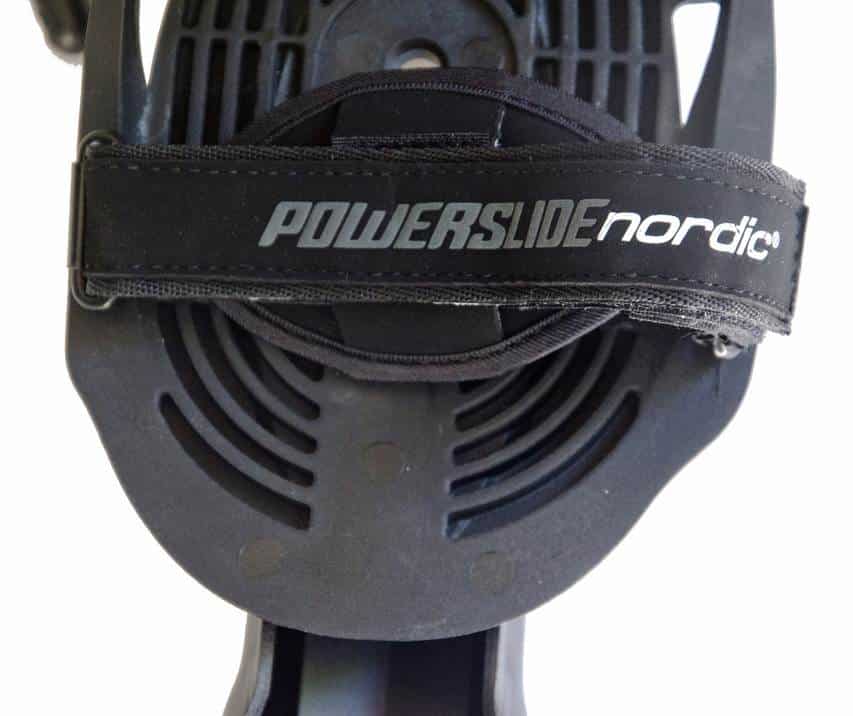 |
 |
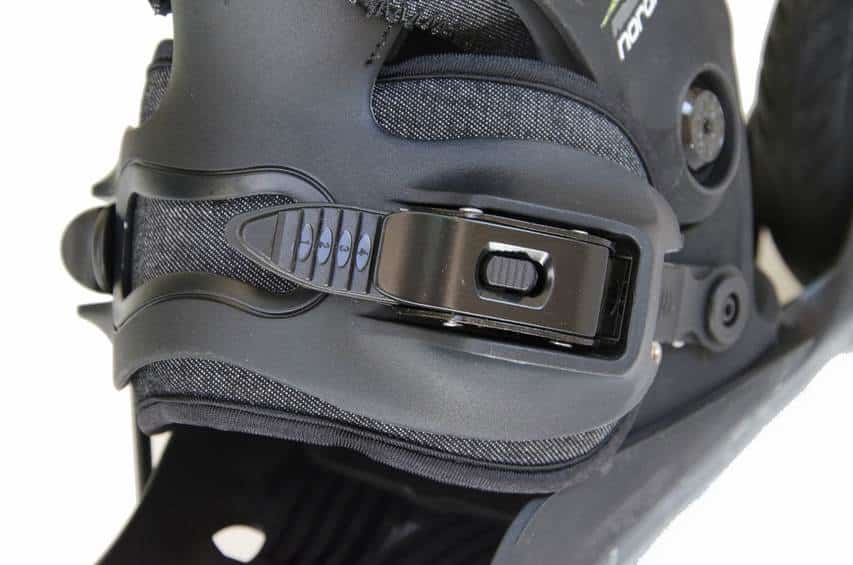 |
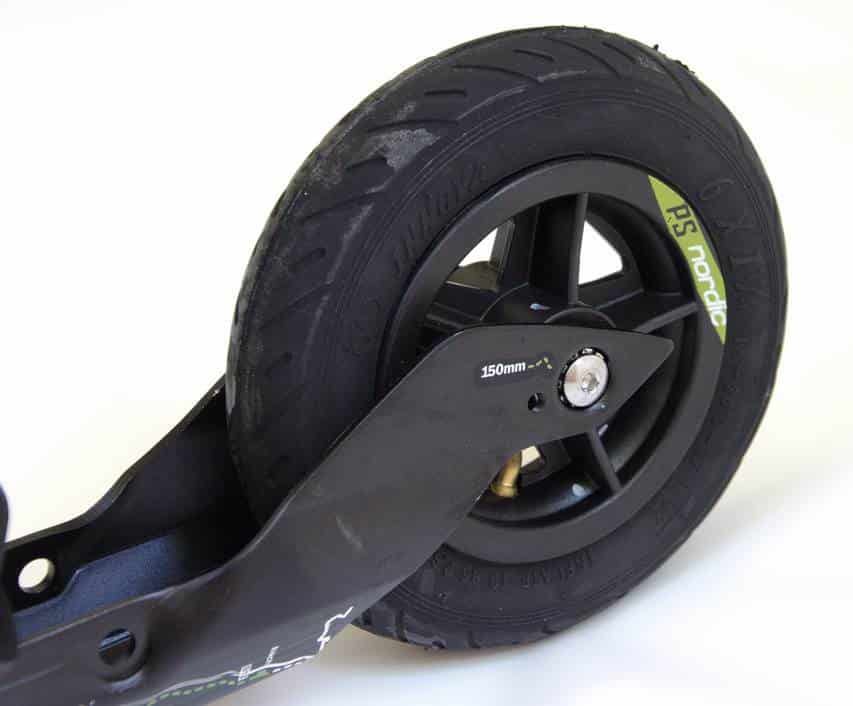 |
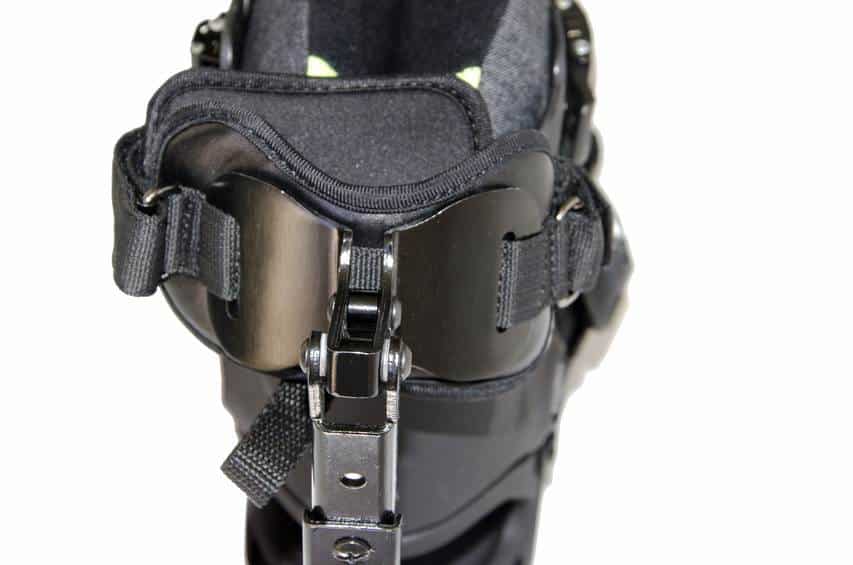 |
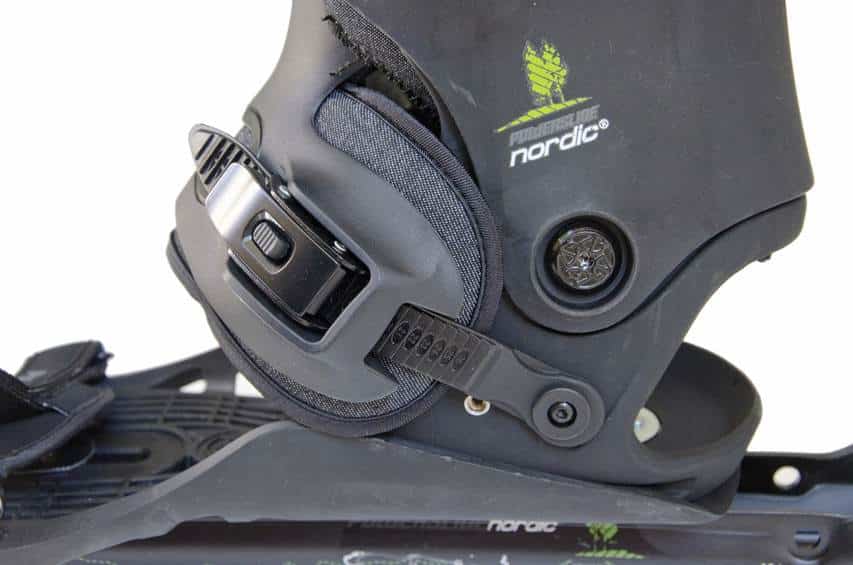 |
 |
 |
Useful links
Testing the Powerslide XC Path (2011)
Photos : Powerslide et Alfathor
Thanks to X-Skating shop
